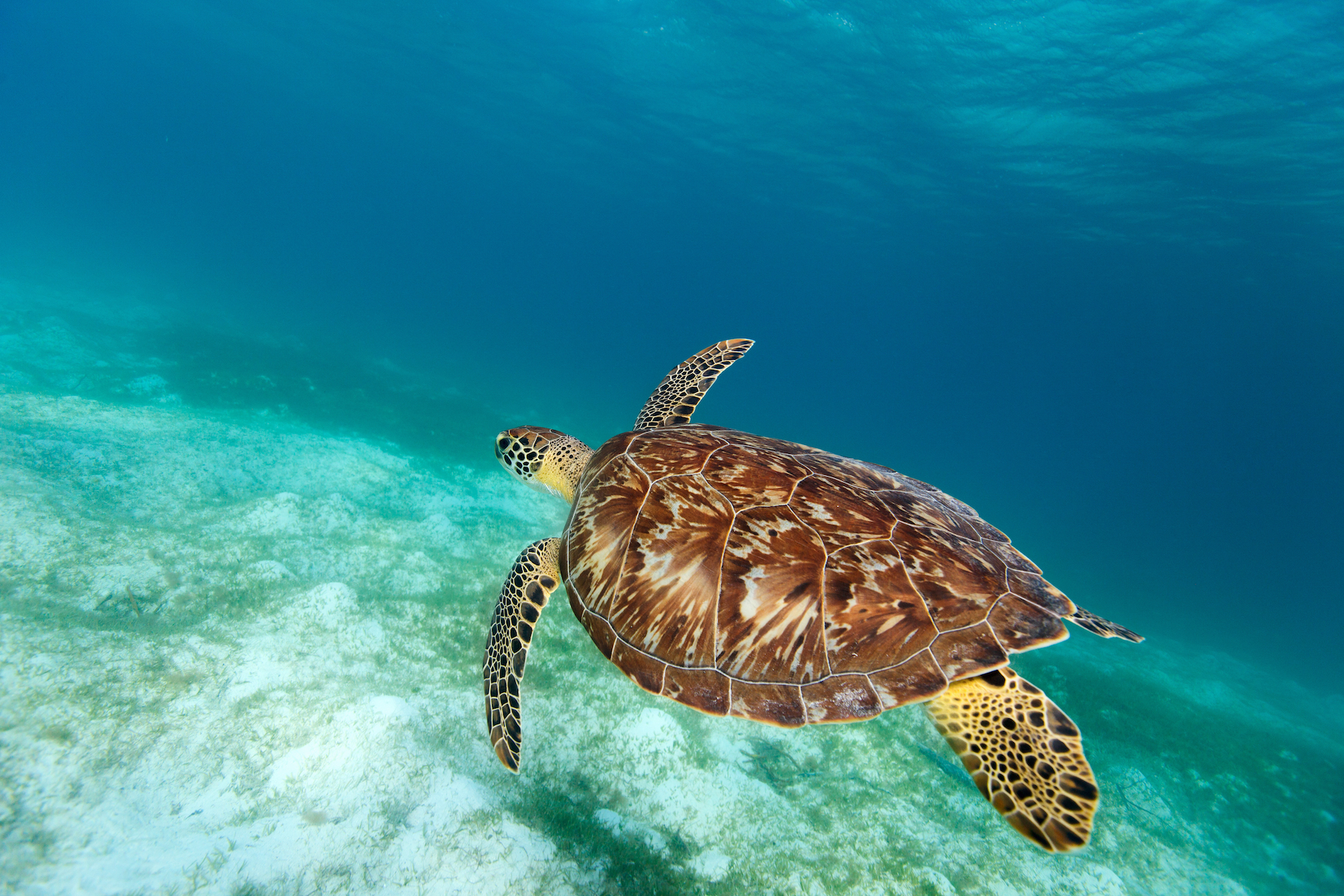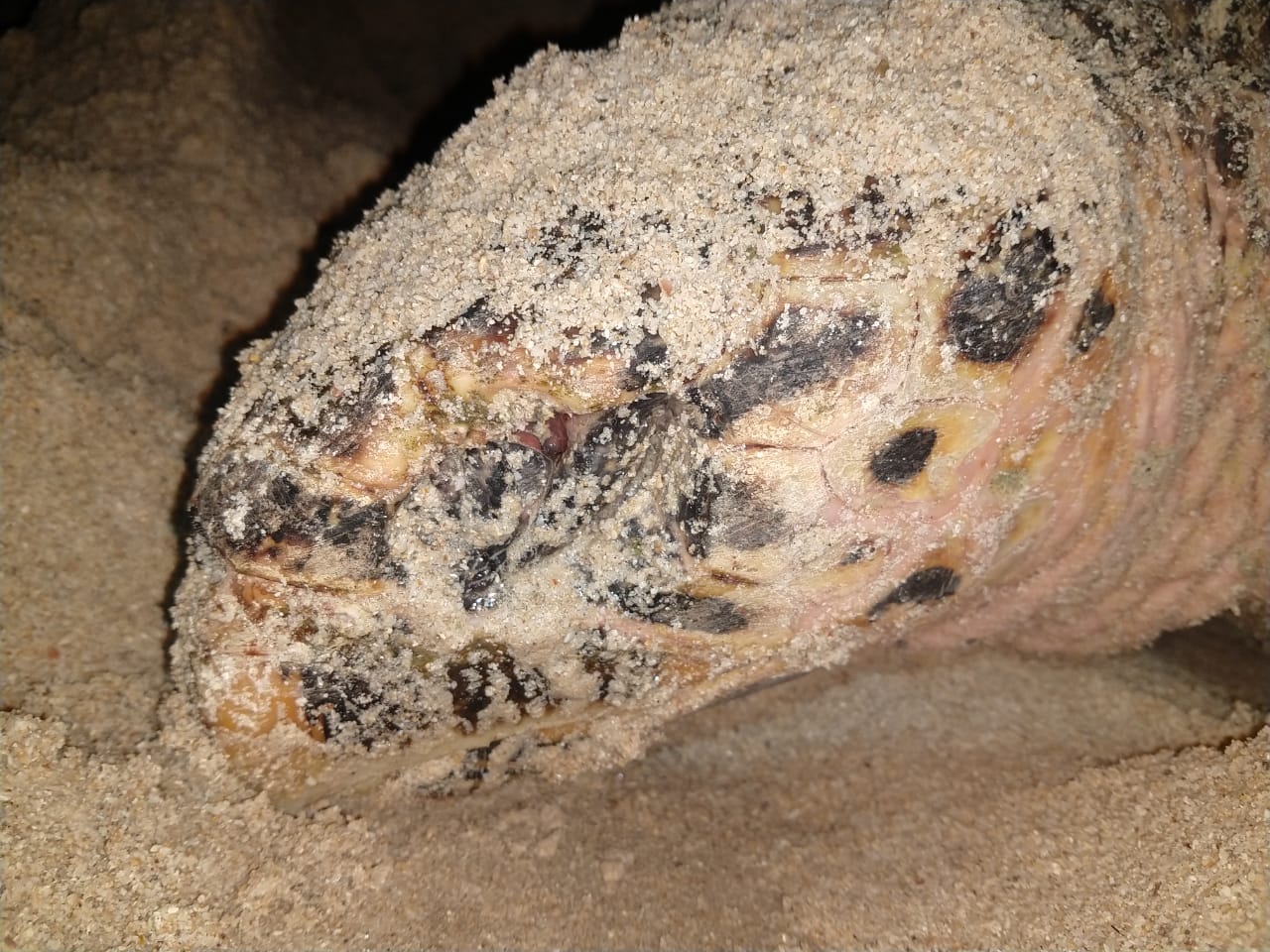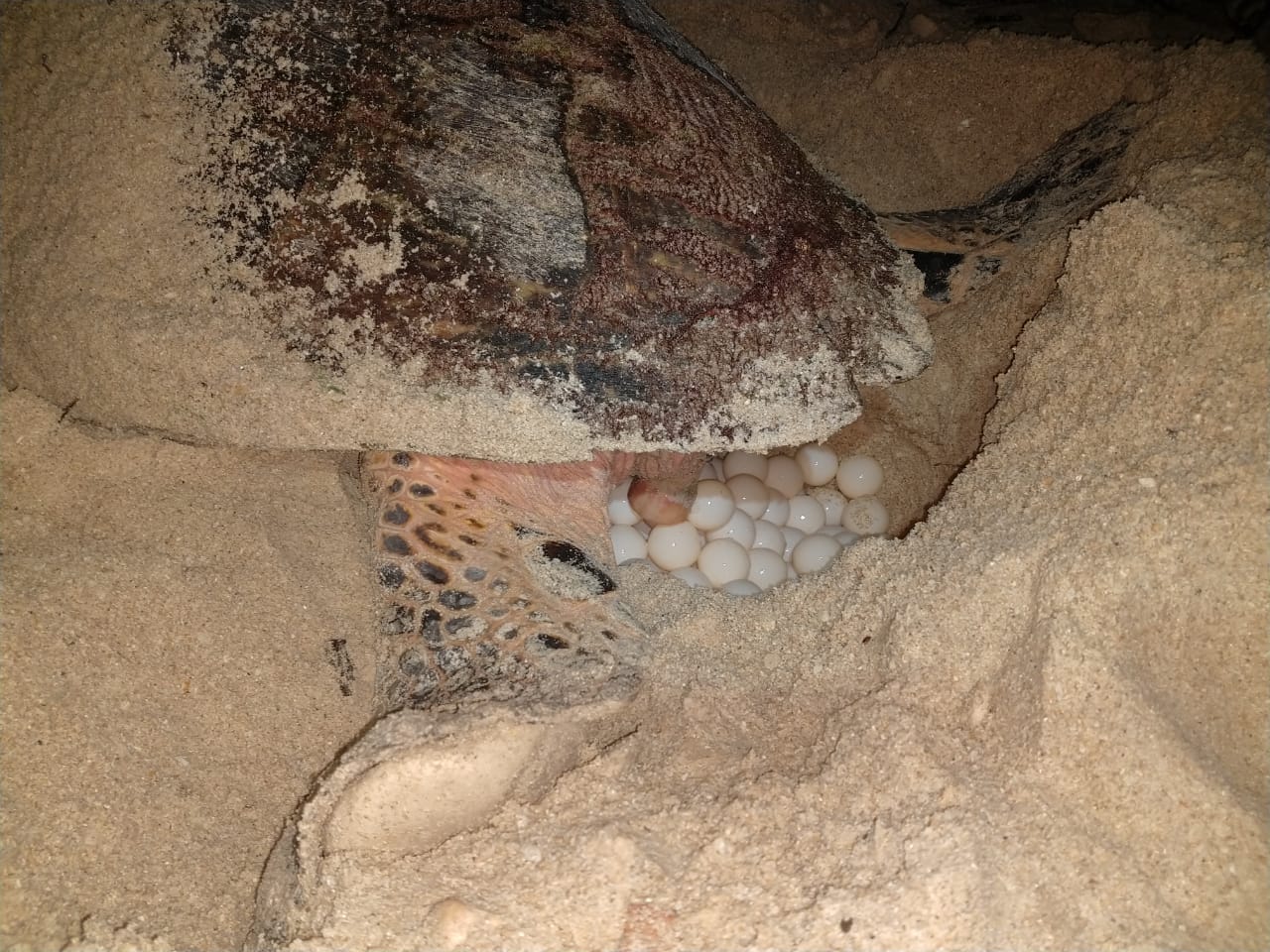One Determined Hawksbill Sea Turtle
What animal wears an 89cm long shell with overlapping plates, nests approximately 120 eggs at any one time, and lives life with only one eye?
A Hawksbill Sea Turtle known as Blindy.
Blindy lives off the coast of Campeche, in the Yucatan Peninsula, in southern Mexico. According to the World Wildlife Fund, Hawksbills derive their name from their distinctive hawk-like, pointed beaks. They live in tropical areas in the Atlantic, Indian, and Pacific oceans either by coral reefs, or amongst mangroves and estuaries. Their average length varies between 60cm (24 inches) and 145cm (45 inches) in length — putting Blindy right in the middle of this range.

The beauty of a Hawksbill Sea Turtle (not Blindy).
A Hawksbill’s ornate, overlapping scales is also another species indicator, although of course in the current global climate it is no surprise that we are seeing fewer and fewer of these on the world’s oceans, because Hawksbills are officially a critically endangered species, having been classified as so for over 50 years, and their populations continue to precipitously decline. Although bycatch, illicit wildlife trade, legal take, and intentional killing (to name a few) are contributing factors to the decimation of the Hawksbill population, ocean pollution is a major factor, and one that threatens not just Blindy’s survival, but the entire ecosystems.
Gerardo Peña, a marine biologist currently working on the Campeche Turtle Project, monitors Blindy’s status every time he sees her on his night patrols.

Blindy’s missing eye. Some say it’s her bad side … we disagree.
“We don’t know why Blindy is a one-eyed turtle, exactly,” he says. “Maybe pollution or some physical trauma caused by barbed wire, bricks, plastics, nets, but something external has obviously happened to her.”
Notwithstanding her missing eye, in every other sense Blindy is a fully functioning Hawksbill: “This summer is the first time we’ve seen her in the Seybaplaya area, although going by her not having a tag it’s also possible that this is the first time she’s come into contact with a turtle monitoring station.”
“Females in a reproductive period move back and forth along the Yucatan coast, all season, which is the northern hemisphere summer,” Peña explains, “they can lay across multiple beaches but they have a preference for returning to the beaches they were themselves born on. Out at sea they eat marine grass, jellyfish or sponges in great quantities, and when they come onto the beaches, it’s exclusively to lay their eggs.”
Blindy, by all accounts, is a capable nester, instinctively finding a good sandy spot above the high water mark before beginning to shovel the top dry sand to the side with the aid of her front flippers. She then shifts her position and starts to excavate a hole in the sand with her hind flippers and gets into position to lay her clutch of eggs. Once complete, she fills in the nest with sand and returns to sea.

Blindy laying her eggs in the sand of Seybaplaya, Mexico.
On average a Hawksbill will repeat this cycle three to five times a season. During that time, they lay on average 130 to 160 eggs, after which, all being well and the fates being on their side during a two month incubation period, little hatchlings will emerge from the sand, typically at night, and frantically make the rush to the water.
“We estimate Blindy to be approximately 35 years old,” says Peña, “and we hope that she lives at least another 100 years!” An exaggeration born of emotional attachment, no doubt, the kind that conservationists tend to make wherever they are, with whatever species they happen to be working with.
CLICK HERE TO LEARN ABOUT THE CAMPECHE TURTLE PROJECT
Beto Wetter is a native North Californian and an environmental advocate who researches and writes on environmental topics on conservation and sustainability for a myriad of online and print media.
